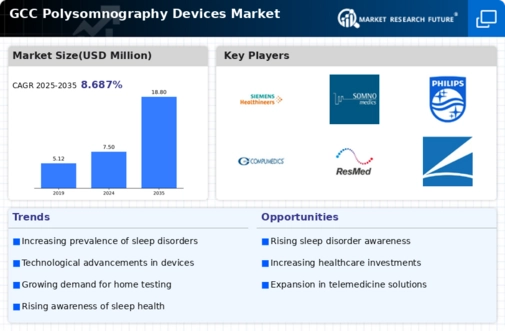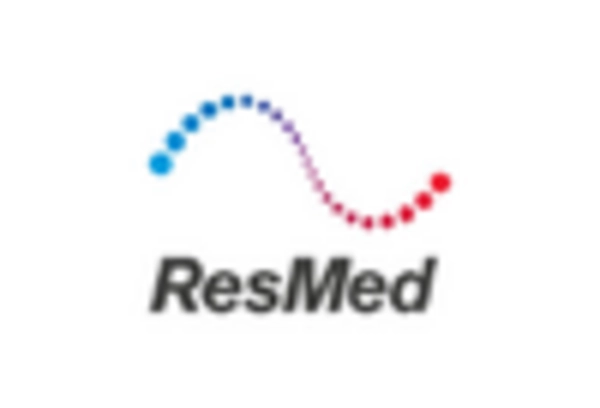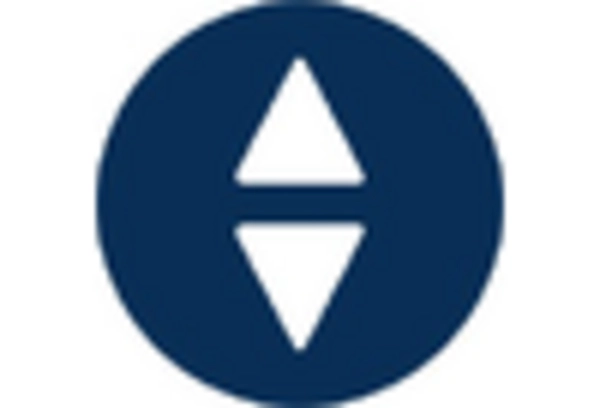Growing Geriatric Population
The aging population in the GCC is contributing to the rising demand for polysomnography devices. As individuals age, the likelihood of developing sleep disorders increases, necessitating effective diagnostic tools. The geriatric demographic is projected to grow significantly, with estimates suggesting that by 2030, around 20% of the population in the GCC will be over 60 years old. This demographic shift is likely to create a substantial market for polysomnography devices, as healthcare providers seek to address the unique sleep health needs of older adults. Furthermore, the increasing focus on geriatric care and the integration of sleep health into overall wellness programs are expected to further stimulate market growth in this segment.
Rising Prevalence of Sleep Disorders
The increasing incidence of sleep disorders in the GCC region is a primary driver for the polysomnography devices market. Conditions such as sleep apnea, insomnia, and restless leg syndrome are becoming more prevalent, affecting a significant portion of the population. Recent studies indicate that approximately 30% of adults in the GCC experience some form of sleep disorder, which necessitates the use of polysomnography devices for accurate diagnosis and treatment. This growing demand for effective sleep disorder management is likely to propel the market forward, as healthcare providers seek advanced diagnostic tools to improve patient outcomes. Furthermore, the rising awareness among patients regarding the importance of sleep health is expected to contribute to the increasing utilization of polysomnography devices, thereby enhancing market growth.
Technological Innovations in Diagnostic Tools
Technological advancements in the field of sleep medicine are significantly influencing the polysomnography devices market. Innovations such as portable sleep monitoring devices, advanced sensors, and artificial intelligence integration are enhancing the accuracy and efficiency of sleep studies. The introduction of wireless and user-friendly devices allows for greater patient compliance and convenience, which is crucial in the GCC region where healthcare accessibility is a priority. The market is projected to witness a compound annual growth rate (CAGR) of around 8% over the next five years, driven by these technological innovations. As manufacturers continue to invest in research and development, the availability of sophisticated polysomnography devices is expected to expand, catering to the diverse needs of healthcare providers and patients alike.
Government Initiatives and Healthcare Investments
Government initiatives aimed at improving healthcare infrastructure in the GCC are playing a pivotal role in the growth of the polysomnography devices market. Increased funding for healthcare facilities and the establishment of specialized sleep centers are facilitating the adoption of advanced diagnostic technologies. For instance, several GCC countries have launched national health programs focusing on sleep disorders, which include the integration of polysomnography devices into routine clinical practice. This strategic investment is anticipated to enhance the quality of sleep disorder diagnosis and treatment, thereby driving market expansion. Additionally, public-private partnerships are emerging to foster innovation and improve access to polysomnography services, further supporting the market's growth trajectory.
Rising Health Consciousness and Lifestyle Changes
There is a notable shift towards health consciousness among the population in the GCC, which is influencing the polysomnography devices market. As individuals become more aware of the impact of sleep on overall health and well-being, there is a growing demand for effective diagnostic solutions for sleep disorders. Lifestyle changes, including increased stress levels and sedentary habits, are contributing to a rise in sleep-related issues, prompting individuals to seek medical advice and diagnostic testing. This trend is likely to drive the adoption of polysomnography devices, as healthcare providers respond to the increasing need for comprehensive sleep assessments. The market is expected to benefit from this heightened awareness, as more individuals prioritize their sleep health and seek out advanced diagnostic options.

















Leave a Comment